A Trip through Colonial America & the Black Belt
Adna Bertrand RockwellI recently returned to my Whidbey Island summer house after a trip which mixed work with a family reunion. The first part of the trip was work. I flew across the continent to Raleigh, North Carolina, rented a car, and drove to Roanoke Island. The purpose of this part of the trip was to come up with some material for Counter-Currents. Roanoke Island is the site of the famous “Lost Colony,” where the first English child, Virginia Dare, was born in North America. The colonization of North America is a subject of fascination to me personally. (Counter-Currents has several good articles on the colonial project.) Additionally, the pro-immigration restriction Website, Vdare (which redpilled me), takes its name from the first English child born in the Colony. I was especially intrigued when I read in Andrew Lawler’s book about Roanoke, The Secret Token, that “Virginia Dare, that innocent grandchild of John White, has for well over a century been held up as a heroine to white supremacists.”[1]
The Roanoke colonists and their backers were also very literate, and through their patron, Sir Walter Raleigh, highly connected to the English political elite. Those involved in the Colony thus represented the bleeding edge of the emerging British Empire. It was a mix of bourgeois sentiment, scientific advances, and freebooting piracy. The Lost Colonists were not religious fanatics like the Plymouth Pilgrims, or aristocrats like those in Jamestown. Instead they were a cross-section of urban, middle-class Englishmen carrying out a “back to the land” project. It seems that even in the 1580s, Anglos were troubled by their culture of urbanization and modernity. But there is also a dark edge to the myth. We know that the other colonists in New England and Jamestown had very close calls with white genocide – the Lost Colony very likely met with it in full measure.
Because the Roanoke Colony vanished, and since there is endless speculation as to what happened, the myth of it all has become more powerful than the reality. This myth can be interpreted in a number of ways. For example, one can coldly infer that the Tudor conquest of Ireland (then ongoing) was made easier by the lessons learned at Roanoke. As described above, “white supremacists” have claimed its legacy.[2] The mixed-race Lumbee Tribe in eastern North Carolina also identify with the Lost Colony of Roanoke. Virginia Dare has become a widely-used marketing gimmick as well as a wine label. Lawler argues that the Lost Colony has caused an American version of “Jerusalem syndrome,” a phenomenon whereby visitors to the latter city become overcome with passion and do strange things like preach disjointed sermons while wearing only a hotel bedsheet. In the case of the related “Lost Colony Syndrome,” there are Americans who create elaborate theories about the fate of the Colony, and the affair ends up dominating their waking life. Lawler admits he has a “mild form”[3] of it himself.
Lawler’s book goes over the basics of the Colony, in addition to the lives of those who devoted their lives to researching it. There is much on the ideas of the late David Beers Quinn of the University of Liverpool, who rather persuasively argued that the Colony successfully moved from Roanoke Island to the vicinity of modern-day Norfolk, Virginia, and were killed by the Powhatan just as the Jamestown colonists arrived. Lawler tells the story of the Lost Colony through the lives of modern archaeologists, opera enthusiasts, geneticists, professors, and even hoaxers. In short, this book is highly entertaining.
Several things stand out from the perspective of a white advocate:
- The Roanoke Colony shows just how precarious our position can be. White genocide, either through murder or interbreeding, is real and has happened before.
- Even in 1587, European society was light-years ahead of that of the Indians. The colonists were doing metallurgy within weeks of their arrival in a raw wilderness, and the first group even had a world-class scientist among its ranks. European records are well-kept. We know the story of Roanoke’s chief mariner, and can reasonably suppose the Spanish didn’t wipe out the Colony because there is no record in Spain of such an operation. Indians, and indeed most non-white societies, kept few, if any, records.
- A non-white who gets some sort of initiation into white society can still be a threat. For example, an Indian named Wanchese, who had been to England and was presented at Court, vanished upon his return to America and went on to lead Indian resistance. This may have proven fatal to the Colony.
- Small victories add up, but so do small defeats. If the Roanoke colonists had had a few more lucky breaks, they might have survived.
- Colonial projects work best with civilian – not military – leadership, and intact families.
- Virginia Dare is a genuine cultural icon for white Americans, no different than what Moses is for the Jews.
- Most mainstream readers deliberately downplay or ignore the arguments of white advocates. For example, Lawler claims Peter Brimelow launched “into a diatribe” during an interview.[4] Having one’s ideas deliberately misrepresented by the mainstream remains a problem for us. Lawler also doesn’t seem to realize that “white supremacism” is a natural reaction to non-white pathologies such as those he describes in the Lumbee Tribe.
Roanoke Island is just west of the Outer Banks, which today is a crowded tourist zone of beach houses, restaurants, and the like. Roanoke Island’s infrastructure includes a series of bridges which connect the mainland to the Outer Banks. The Island itself is lush and green. There is a rather nice national park and a replica of a sixteenth-century ship. (It’s really, really small, and such ships carried many people as well as months’ worth of supplies!) There is a Lost Colony play that is performed there every summer, and has been running for years. From Roanoke, it is easy to get to Jamestown, which was the first permanent English colony in North America.
From Roanoke to Missouri, & Observations on the “Black Belt”
And that’s where I visited next. I drove towards Chesapeake Bay and ground my way through traffic through an underwater tunnel at Hampton Roads, and then stopped and visited the Jamestown Museum. The story of Jamestown has been told here before, and if anything Jamestown’s biggest ongoing tragedy is that a Dutch (or English) ship brought a group of Negro slaves there in 1619. Although nobody knew it at the time, the hold of that ship contained the seeds of the US Civil War, race riots, ghettos, crime, urban blight, and plenty of socioeconomic deadweight.
From a white advocates’ point of view, the only thing I can find wrong with the Jamestown Museum is that it pulls its punches and obscures the vast differences between the white, red, and black races that were brought together by the dynamism of Virginia’s first families. For example, it is not clear in the Museum that while Indians ground their corn using a very inefficient method, Europeans had already developed millstones, windmills, watermills, and so on. The key thing that the Europeans had, above and beyond their incredible technological suite of gunpowder, ships, and navigational aids, was finance. The Virginia Company was a private venture, funded by stockholders. Banks and stock markets, for all their many faults, can at their best gather up slack capital for great purposes.
From Jamestown I drove to Charlottesville, the site of the disastrous rally. I have nothing to say about that, but after meeting with some movement fellow travelers there, I discovered that while most white residents of Charlottesville have impeccable credentials in political correctness, the community in general is something like apartheid-era South Africa. The town is filled with wealthy, well-meaning whites and is home to a large university, but intermixed are SOWETOs of African dysfunction. The politically-correct whites live in a constant state of semi-fear. Negro panhandlers accost whites pumping gas at the station just outside the trendy pedestrian mall. Charlottesville is a powder keg, Unite the Right or no.
Then it was on through the Cumberland Gap to Missouri, where I’d be joining my family gathering of Rockwell grandparents, aunts, uncles, and cousins. The key thing that I recall from the journey is that you can distinguish the black areas by their ruins. Rural Virginia is very much part of the “Black Belt,” and there are derelict houses, churches, and even whole communities scattered about. The very black Cairo, Illinois is a dump; the only well-maintained buildings in it are those belonging to the government.
My reunion was held in the part of Missouri near the “Bootheel,” just outside the “Black Belt.” In this area, the texture of life is quite different from the “Black Belt.” I didn’t see any ruins at all. There were also new housing developments. Quite possibly the answer to this mystery was provided by a watermill that I saw which had been built around the time of the Civil War by one of the area’s leading citizens. That citizen had recruited a great many settlers of German origin from the East Coast and brought them west to develop the area. It seems to me that the ultimate economic advantage is to be in possession of a population which can trace its roots to Europe north of the 50th Parallel. If one can build a watermill, one can build, well, anything. Furthermore, if one can build a watermill, one can adapt to changing technological and economic circumstances. Contrast what the Anglo-Germans have done with African output in the “Black Belt,” only a stone’s throw away – but a gigantic cultural world apart. When mechanization made sharecropping by blacks unprofitable, the Negroes moved north to cities like Saint Louis, where they turned the place into a slum. For a somewhat truthful account of this, I suggest watching the 2011 documentary, The Pruitt-Igoe Myth.
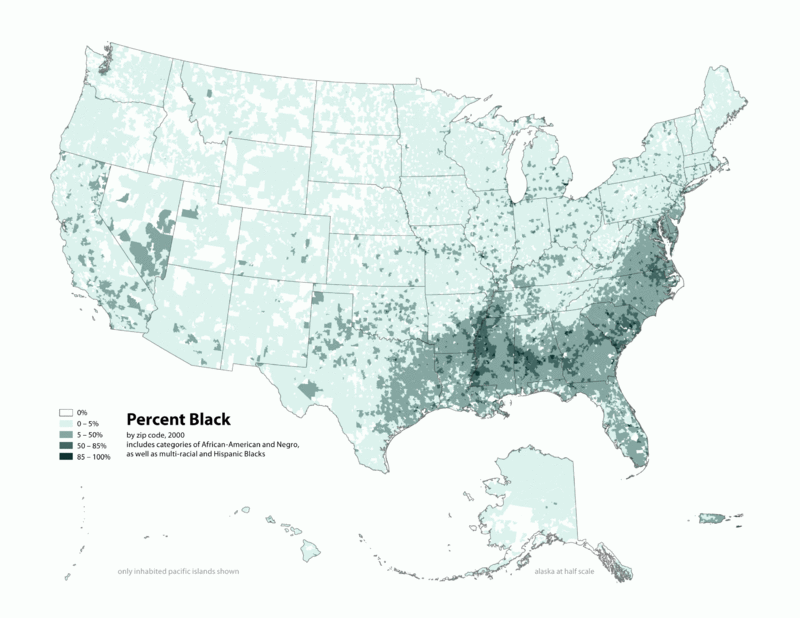
The “Black Belt.” If you take this chart and line it up with a chart of any pathology in America – diabetes, crime rates, welfare use, and so on, then the source of our problems becomes clearer.
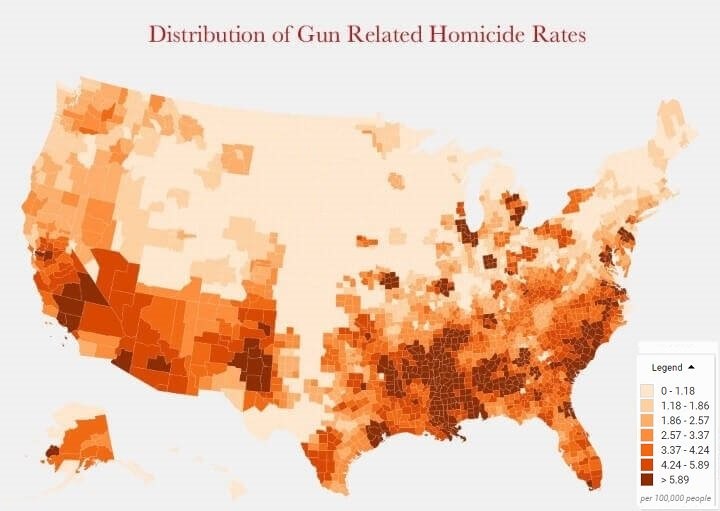
Murder rates line up with the “Black Belt.” In the Northern cities, most murders happen in black neighborhoods. The Southwest has a large Hispanic population.

The “Black Belt” in reverse. This is the location of patent holders by county. It is heavily weighted towards Yankee- and German-settled areas.
Post-Redpill Family Reunion
A great many workaholics probably don’t really enjoy work per se. Instead, they stay late on the job so as to apply themselves to manageable tasks rather than go home and deal with the sour, intractable problems of family life. While my extended family life is mostly harmonious, there are lingering tensions due to my racial activism. You see, my Rockwells are not happy to be associated with George Lincoln Rockwell, and don’t want the subject brought up.
Indeed, one of my aunts called me up to scream at me when she saw my name on a Counter-Currents article. She is a schoolmarm who was sponsoring a Rescue Negro she knew from her church. Her single-mom Rescue Negro had a child who was “best friends forever” with one of her children. During the screaming, I didn’t say anything – but silently predicted that her son and the child of the Rescue Negro were only “best friends forever” for the time being.
At the reunion, I was fortunate that my aunt chose not to bring up my activism. But my prediction had panned out: The relationship with the Rescue Negro was on the rocks. Tensions had caused my aunt’s son to punch his black “best friend forever” in the face. Indeed, all interracial relationships are a forced, unnatural thing. Television programs like This Is Us are metapolitical frauds.
Baseball, Metapolitics, & the Second Great Awakening
Most of my family is not from Missouri. Their roots in the region are northwards, in the Quad Cities. The Rockwells got there by moving westwards from Norwalk, Connecticut between 1650 and 1850. The reason the reunion was in Missouri was that one of us owns a house there, and it was centrally located for all the family. The person who owns the house also has an orchard nearby. One evening we went to the orchard and played a game of wifffleball with all the adults and kids.
Wiffleball, of course, is just a variation of baseball. Baseball’s roots have been tracked by scholars to derive from either an English game called Rounders, or else a family of English bat-and-ball games called bittle-battle. Games like baseball and football were developed in New England and were considered “lawful recreation,” as opposed to “unlawful” recreation like blood sports and gambling. While the game was a great deal of fun, what struck me was that we were carrying on in a way not unlike our ancestors in England, centuries ago. We were a traditional family doing a traditional thing.
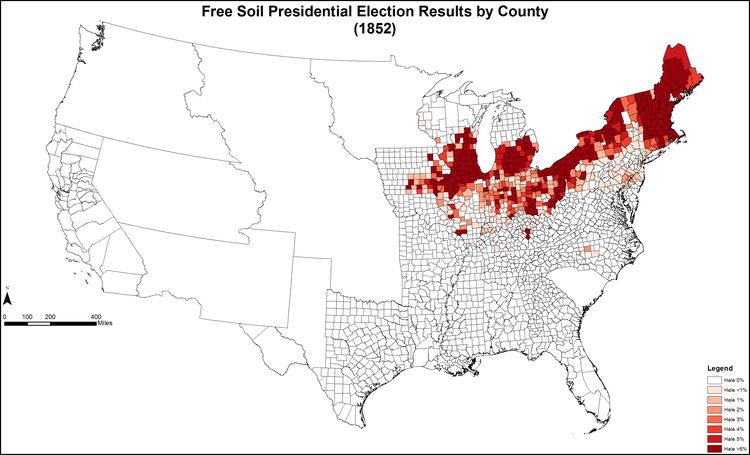
The location of Free Soil Party Voters in the 1852 US Presidential Election shows where New Englanders expanded into the Midwest. Baseball traveled west with the Yankees.
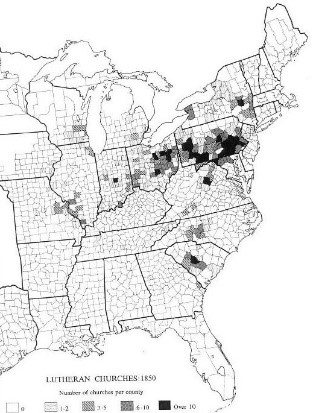
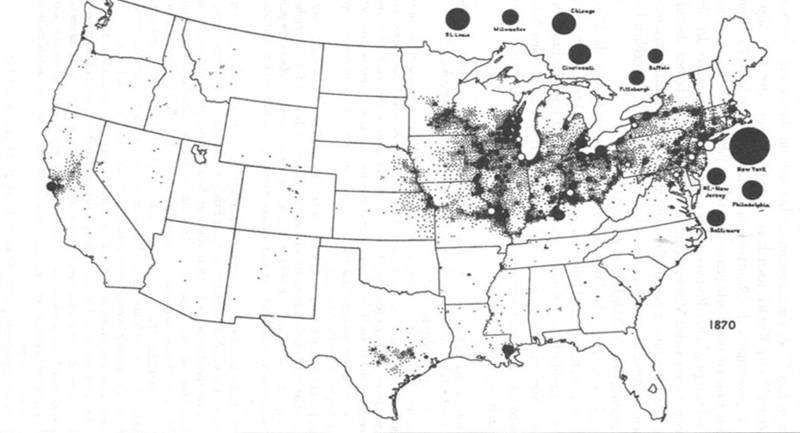
While they weren’t as much into baseball, they were a big blessing. Above are Lutherans (then nearly all of German origin) in the 1850s. Below are the settlement patterns of Rhineland-Palatinate Germans in the nineteenth century. A drive from the “Black Belt” to the “Kraut Belt” is an exercise in racial awareness. In their push westwards, colonial-stock Anglos made different choices. In the North they teamed up with the Germans, in the South they used enslaved Africans. The results of that choice continue to influence everything.
On the evening of the family wiffleball game, I happened to use the facilities in the orchard’s service building. On the wall above the toilet was embroidery in a frame with words to the effect of “Faith not Fear.” There was also a large map of trails through the orchard. The trails were named after Old Testament Prophets like Isaiah and Nahum.
This got me thinking about another deeply American tradition – that of the Second Great Awakening. This spiritual movement is said to have originated in Upstate New York. The place became called the “burned-over district” because so many religious revivals swept through the area, like a series of overlapping prairie fires. One end of the “burned-over district” held William Miller, who became spiritually inspired as a US Army Captain during the War of 1812. His ideas would go on to help create the Seventh-Day Adventists, the Branch Davidians, and even the Baha’i faith. It also strengthened the concept of premillennialism in Christian eschatology. On the other end of the “burned-over district” was Joseph Smith, Jr., who followed New England’s traditional magical folkways involving seeing stones, and out of it developed the Mormon faith and its offshoots.
While the “burned-over district” gets much attention, the Second Great Awakening in fact spread all the way across the United States. The American political leaders on both sides of the Civil War were influenced by its ideas, and they all claimed to some degree that they were on God’s side in the conflict. Many of the Second Great Awakening’s less controversial ideas, such as no postal delivery on Sunday and Prohibition, were finally enacted during the Wilson administration.
Officially, the Second Great Awakening started sometime in the 1790s and reached its zenith around the 1850s. However, its consequences are ongoing in the United States to this day. Many of its ideas should be examined. Here is my take:
- Premillennialism (i.e., Jesus returns and solves all problems) is a concept that can cause people not to seek reform. If the world is about to end, why worry about the environment or changing demographics?
- The Second Great Awakening misinterpreted the actions and messages of the Old Testament Prophets. While many of these Prophets express great truths that can be applied universally, if you assume that their actions were aligned with Jewish ethnonationalism, their stories will be seen in a different light. Consider:
- Joseph, with the coat of many colors, serves a greedy Pharaoh and organizes a tax policy which dispossesses the middle-class Egyptians (Genesis, Chapter 47; also here). This is much like the “financial genius” Alan Greenspan, who helped to create the housing bubble and Great Recession which followed it.
- Moses – it is best to read Dietrich Eckhart’s Bolshevism from Moses to Lenin to see what I mean here. After reading it, one comes to realize that Cecil B. DeMille’s take on the story in the movie The Ten Commandments (1956) is a fundamental misinterpretation of the story. In the movie’s unusual introduction, DeMille says, “The theme of this picture is whether man ought to be ruled by God’s Law or whether they are to be ruled by the whims of a dictator like Rameses. Are men the property of the State or are they free souls under God? This same battle continues throughout the world today.”
- After finally being kicked out of Egypt, Joshua becomes an ISIS-like figure in Canaan (Numbers, Chapter 31).
- Elijah’s conflict with King Ahab and Queen Jezebel is not a spiritual matter as much as it is about extremist Jews pushing against moderate Jews, as well as Gentiles. The murder of the Priests of Baal after Elijah’s magic act is an act of extreme religious and ethnic intolerance (1 Kings, Chapter 18). In short, Ahab did nothing wrong, and Jezebel was just.
- Isaiah refers to his people’s enemies as “Beasts of the Field” (Isaiah, Chapter 56). For further reading on the deeper meaning of this statement, I suggest Kishinev: In Jewish History and Jewish Memory by Andrew Joyce.
- Religious conflicts are more difficult to manage than racial ones. Ultimately, being of a different race is a condition of no particular moral circumstance. Racial differences are baked-in, and one can’t convert from one race to another. Racial differences can be managed through separation. However, differing interpretations of the works of the same God create all sorts of problems. In my family, we have Young Earth Creationists, ultra-liberal Unitarian-Universalists, lukewarm mainline Protestants, and Christian Scientists. The battles with the “no doctors” Christian Scientists over what to do with their injured kids is where the blood from a family fight really gets left on the floor.
- Negro Worship is a product of the Second Great Awakening. In the 1840s, people like Sojourner Truth spoke at religious revivals. Eventually, that which is holy became mixed with that which is African in the minds of many whites. The drugstore clerk who gets fired after calling the police on a darky trying to pull a coupon scam is, from the perspective of Negro Worship, a sinner who got what was coming to him.
I flew back to the West Coast from Saint Louis. In conclusion, I can only say that if you have the time and money as a young adult, don’t miss out on your family reunions. It’s also a good idea to take to the road sometimes. Roanoke Island and Jamestown were quite interesting. Furthermore, it’s pretty alarming just how quickly kids grow up. I had a four-year-old trash-talk me at the wiffleball game, and he hit what I pitched at him pretty far.
Notes
[1] Andrew Lawler, The Secret Token: Myth, Obsession, and the Search for the Lost Colony of Roanoke (Toronto: Doubleday, 2018), p. 14.
[2] Of course, Peter Brimelow is not a white supremacist, and Vdare is not a white supremacist Website.
[3] Ibid., p. 321.
[4] Ibid., p. 337. To see how Peter Brimelow actually speaks, see this video.
A%20Trip%20through%20Colonial%20America%20and%23038%3B%20the%20Black%20Belt
Share
Enjoyed this article?
Be the first to leave a tip in the jar!
Related
-
James M. McPherson’s Battle Cry of Freedom, Part 2
-
Comment Georges Floyd a détruit la ville de Minneapolis
-
The Worst Week Yet: March 31-April 6, 2024
-
Fascism in Texas, the Inalienable Right to Nappy Hair, and Other Fertilizer from the Mainstream Media
-
Guess Who’s Coming to Dinner? Reclaiming Racism
-
Christian Reconstructionism and Ethno-Religious Conflict, Part 2
-
The Dark Side: Paul Kersey’s Whitey on the Moon
-
Counter-Currents Radio Podcast No. 572: On Tucker Carlson’s Interview with Vladimir Putin
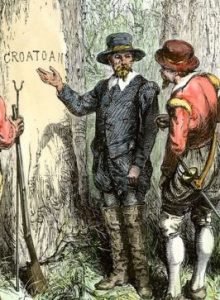
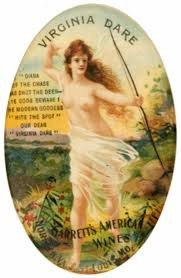
1 comment
I enjoyed this piece. I have many fond memories of extended-family gatherings which included baseball or softball games. They were friendly games, although dad sometimes had a competitive spirit which was similar to that determined 4-year-old.
I’m grateful for the rich heritage that was passed down from our colonials. My Quaker ancestors possibly rubbed elbows with my Borderer and Pennsylvania-Dutch ones, and that was more than enough Diversity for the people of the time. My Quaker ancestors seem to have been very conservative, sturdy people overall, unlike many of today’s Quakers. They emphasized education, self-improvement and cooperation, all of which improved the communities in those earlier centuries.
One of my favorite pastimes used to be touring historical sites, until the “Museum Studies” graduates turned them into temples of PC. I’m glad that the museum at Jamestown apparently hasn’t succumbed, yet.
Comments are closed.
If you have Paywall access,
simply login first to see your comment auto-approved.
Note on comments privacy & moderation
Your email is never published nor shared.
Comments are moderated. If you don't see your comment, please be patient. If approved, it will appear here soon. Do not post your comment a second time.